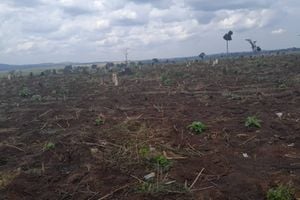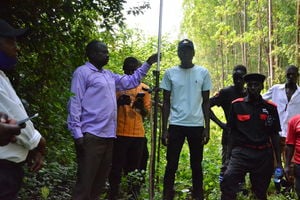
Babra Kembabazi
Bugoma Forest is poised to attract tourists following years of dedicated work by the government and other stakeholders.
Under the National Development Plan (NDP) III, the government identifies tourism as one of the priority economic sectors that must be developed for Uganda to reduce poverty levels, increase jobs and accelerate economic growth.
Subsequently, operationalisation of chimpanzee trekking in Bugoma Forest has been long overdue.
With its unparalleled biodiversity, rich cultural heritage, and exciting adventure activities, Bugoma Forest has the potential to become a premier tourist hotspot.
Early this month, the National Forestry Authority (NFA) announced that Government of Uganda with support from World Bank is implementing a project called Investing in Forests and Protected Areas for Climate Smart Development, which aims to improve sustainable management of forests and protected areas and increase benefits from forests in targeted areas largely in the Albertine Graben.
Specific to Bugoma forest is infrastructure development to support visitors’ information centre, establishment of 20 kilometre forest trails to support chimpanzee trekking, and training in tour guiding. This is as a result of increased discourse on tourism potential of Bugoma Forest by various stakeholders and the existence of two groups of chimpanzees that are already habituated.
According to research conducted by the Inclusive Green Economic Network-East Africa (IGEN-EA) in 2022, Bugoma Forest has the potential to earn Uganda more than half a million dollars (about Shs1.8 billion) annually if promoted as a tourist destination.
The forest is home to 570 chimpanzees, 225 bird species, bush elephants, butterflies and other animals.
Bugoma could also be exciting for visitors who love forest walks and act as a bird watcher’s paradise, thereby offering a rare opportunity for visitors to observe wonders of creatures in their natural habitat. This lush oasis is teeming with life, boasting an incredible array of flora and fauna that will create incredible adventure.
As we delve into the depths of this forest, it becomes clear that Bugoma is a treasure trove of tourism potential, ready to be unlocked.
In addition, the forest is one of the most biodiverse in Uganda with Birdlife International observing that of “65 forested Protected Areas that were surveyed for biodiversity in Uganda, Bugoma ranked eleventh in overall biodiversity value and fifteenth in terms of rarity value”.
By supporting chimpanzee trekking in Bugoma, tourists will help to promote sustainable tourism that benefits both wildlife conservation and the local community through job creation that will boost their livelihoods.
As Bugoma Forest continues to flourish as a tourist destination, we look forward to seeing the positive impact on conservation and community development.
Furthermore, Bugoma Forest plays a significant role in the local and regional climate, water cycle, and soil conservation. It serves as a crucial carbon sink, helping to mitigate climate change.
For the vast majority of dwellers, the forest holds cultural importance for the local communities, who rely on it for traditional medicine, food, and other resources.
After years of dedicated efforts to support sustainable tourism in Bugoma Forest, the results are finally starting to sprout. Congratulations to Ms Jane Goodall, Inclusive Green Economy Network-East Africa, NFA, the Kikuube District Local Government, and other players for habituating chimpanzees and successfully advocating for Bugoma forest tourism to promote its conservation.
Finally, I urge the government and other stakeholders to support training of more youth and women so that they become tour guides, restoration of the forest by Hoima Sugar Limited per National Environmental Management Authority’s order and releasing of the forest boundary opening report by Ministry of Lands, Housing and Urban Development as part of efforts towards conservation of the forest and promotion of ecotourism for economic growth.
Babra Kembabazi




